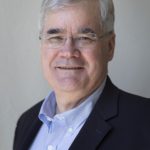 On Swarthmore College Week: Overflowing sewers are a problem in many cities.
On Swarthmore College Week: Overflowing sewers are a problem in many cities.
Arthur McGarity, professor of engineering and environmental studies, explores options to control rainwater runoff.
Arthur McGarity is the Henry C. and J. Archer Turner Professor of Engineering at Swarthmore College. He received PhD and MSE degrees from Johns Hopkins University and BS degree from Trinity University. He has published research in the fields of Environmental Engineering, Solar Energy, Building Energy, and Operations Research.
Green Infrastructure to Reduce Water Pollution
In Philadelphia, raw sewage regularly spills into urban creeks and rivers whenever it rains more than a fraction of an inch. These are not accidental spills. In fact, some sewer systems were actually designed to spill sewage. These spills are known to engineers as “combined sewer overflows” or CSOs because they combine runoff and sewage into a single pipe.
In the mid-nineteenth century, waterborne diseases were linked to drinking water contaminated by human waste. To reduce the chance of contact with contaminated water, sewers were built to carry mixed stormwater and sewage away from homes and into streams and nearby rivers.
Philadelphia began installing sewers in the late 19th and early 20th centuries. Later, sewage treatment plants were built, but they lacked the capacity to treat the large combined flows that accumulate when it rains. Thus, sewer overflow pipes were installed to act as relief valves, spilling excess flows of diluted raw sewage, or CSOs, into surface streams.
New technologies, called green stormwater infrastructure, are now being tested in Philadelphia to reduce CSOs. At sites throughout the city, rain gardens, infiltration tree trenches, permeable pavement, and green roofs are capturing stormwater before it enters the sewers, thereby reducing sewage overflows.
Our research team has monitored the effectiveness of three green infrastructure installations in Philadelphia, calculated CSO reductions, and evaluated related changes that help make neighborhoods more attractive, safer, and healthier places to live.
Our results show that strategically targeted green infrastructure investments can achieve CSO reductions at reasonable cost. We developed an “equity index” to learn whether investment dollars are flowing into the neighborhoods with the greatest need. We have also advanced theories of environmental modeling and decision-making that will help us transfer what is learned in Philadelphia to other large cities.
